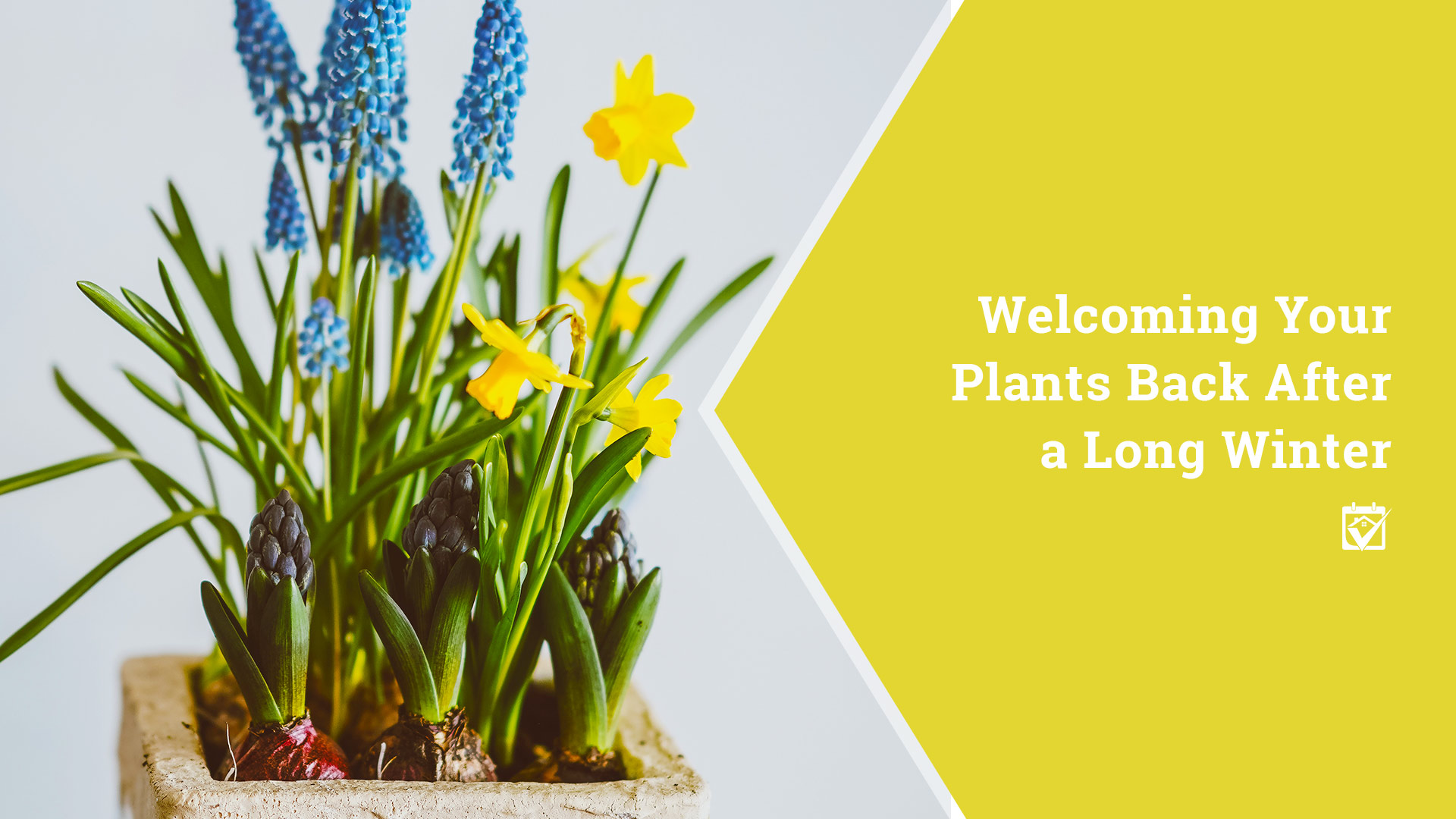Welcoming Your Plants Back After a Long Winter
Welcoming Your Plants Back After a Long Winter
 | |
|
If you’re a gardener, or at least want to be one, there’s no time as amazing as early spring. This is when your plants are starting to wake from their long winter’s sleep. The white snow and frost flowers are giving way to green grass and emerging vegetation that seems to multiply like magic day after day. Although a lot of people sit back and wait for their plants to do whatever it is that they do in early spring, others, like you, are eager to help them be all they can be this year.
The Results of Minimum Plant Care
Many homeowners just let their plants come and go as they please. Usually, they’ve inherited the vegetation from the former owner and have little interest in gardening. It’s ok, it’s not for everyone. But, due to this minimal care for the plants, many varieties will start to die off from neglect. A slow death is still a death.
Obviously, you’re looking to do a bit more to help your plants get off to a good start. Because of this, your landscape will be healthier, live longer and produce more ornamental flowers than those of the neighbor who would have preferred a lot of grass and no plants to tend.
First Thing’s First, Reduce Your Plant’s Risk of Early Season Fungus
There are varieties of herbaceous perennials like bananas, cannas and elephant ear that can survive the winter in many climates if they’re tucked in under a layer of organic mulch that’s two to four inches deep. While mulch protects them from drying out or freezing to death when it’s cold, once these types of plants start to grow in the spring, that life-saving mulch can become a real enemy.
It’s vital that you pull back the mulch from your plants every few days to check for green growth above ground. Once you see it, hollow a moat out between the plant and the mulch. Make sure no mulch is touching the new growth and that the moat you’ve scooped is about two inches wide to allow for further safe development.
Several opportunistic fungi will take advantage of young, green growth that’s constantly touching something moist, like that mulch. There’s a fine line here, tread carefully.
Soil Testing and Amendment
If you have a garden plot and failed to fertilize it in the fall, now is the time to get to it. As soon as you can work the soil, take several samples and either use a home test kit to determine the condition of the soil or have them analyzed by your local university extension’s lab. The extension tests are generally around $10, but the cost varies by location.
Either way, you’ll have some kind of indication about the condition of your soil, as well as what you can do to fix any problems. For example, you may find that your soil is low in nitrogen, a vital nutrient for plants that grow a lot of leaves very quickly, like your lawn. In this case, you’ll follow the instructions for feeding the type of plant you intend to place in the tested area, using a precise amount of fertilizer, so as not to encourage long, spindly growth in those eager plants.
The same applies to other types of fertilizer, including balanced fertilizers like 10-10-10 and 15-15-15. Most established perennials are fine with fertilizer that’s mixed into the top two to five inches of soil, but always check before you get too wild with it. A few species may have unusual reactions, including but not limited to developing an overall burned or wilted look due to root destruction. Never apply more fertilizer than necessary due to the risk of runoff and pollution of waterways.
Turn the Sprinklers On!
Once the nighttime temperatures are consistently above freezing, you’re ready to turn the water back on. Your plants will appreciate the long, deep drink and you’ll be happy to not have to water each one by hand. Remember, when turning irrigation systems back on after being drained, do so slowly. Opening the valve too quickly can result in a high-pressure water surge that can rupture sprinkler heads or burst fittings.
Be prepared to turn the system back off if a surprise freeze creeps on, but waiting as long as possible to get the irrigation started again is also a fairly safe bet.
Check for Signs of Insect Infestation
As your plants start to bud, you’ll be able to tell if they’ve developed any problems during the winter. Generally, these are caused by insect infestations, but in ornamental and fruit trees, a whole range of fungal invasion is also likely.
Small holes in the trunks of trees and shrubs are likely caused by boring insects like clearwing moths, which spend most of their life cycles inside the plant. This makes them very hard to get rid of and often results in the hollowing of the interior of limbs and branches. Those hollow branches pose a major risk to anyone walking below, as they can reach a point where they are no longer structurally sound and suddenly break away from the tree.
Don’t Forget to Call Your Landscaper
You don’t have a landscaper? Well, it’s never too late to meet one, especially when you’re part of the HomeKeepr community! I can recommend my favorite plant experts with just a few clicks and you’ll have access to their complete contact information without ever having to pay for any sort of membership. Just click in the my personalized trusted providers search bar below to get started. :)


Comments
Post a Comment